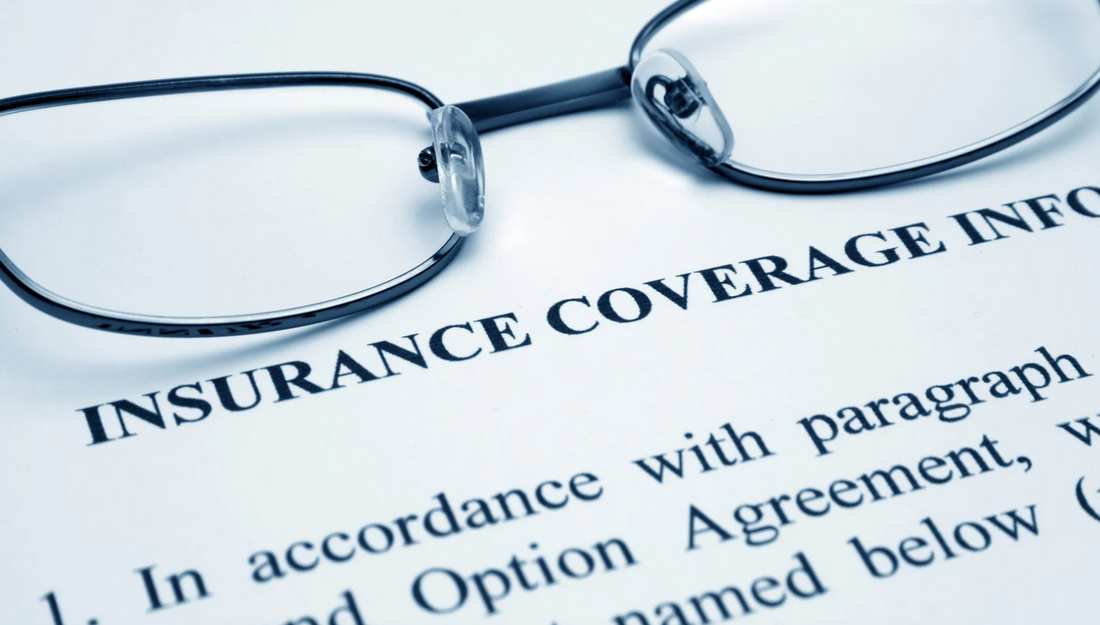
What Does “Full Coverage” Car Insurance Really Mean?
One of the most common phrases we hear in this industry is, “I just want full coverage.” It sounds simple, right? You want to be protected from anything that might happen to you or your car. You want peace of mind. And you don’t want to find out you’re underinsured when it’s too late.
But here’s the thing:
Full coverage doesn’t exist—not in the way most people think it does.
It’s not a specific policy. It’s not a line item. It’s not a guarantee that you’re protected from everything. At Farmers Insurance, Young Douglas, we believe you deserve to understand exactly what your coverage means and how it actually protects you.
Let’s break it down.
What People Think Full Coverage Means
Most drivers assume “full coverage” means they're completely protected. They believe that if something happens, whether it’s their fault or not, their insurance will take care of it.
Here’s the reality: There’s no such thing as a single, all-inclusive car insurance package. Every policy is a combination of different coverages, each with its own purpose, limit, and cost.
When most people say “full coverage,” they’re usually referring to this combo:
- Liability Coverage (required by law in most states)
- Comprehensive Coverage
- Collision Coverage
And while those three are important, they’re not the whole picture.
What “Full Coverage” Actually Includes
Let’s look at what those pieces really cover:
Liability Coverage
This is what pays for injuries and property damage you cause to others. It’s required in California and every other state.
- Bodily Injury Liability covers medical expenses, lost wages, and even legal fees if you’re sued.
- Property Damage Liability covers things like another person’s vehicle or public property (like signs or guardrails).
But liability has limits. If your coverage is too low and the damages exceed your policy limits, you can be held personally responsible for the rest. “Full coverage” won’t save you from that.
Collision Coverage
This covers the cost to repair or replace your vehicle if you're in an accident, whether you hit another car, a tree, a pole, or a wall.
It doesn’t matter who’s at fault. If you collide with something, this is the part of your policy that steps in.
Comprehensive Coverage
This takes care of damage not caused by a collision. Think theft, vandalism, fire, falling objects, natural disasters, or hitting an animal.
Like collision, it also comes with a deductible, which means you’ll still pay part of the repair or replacement cost out-of-pocket.
What “Full Coverage” Leaves Out
Even if you have liability, comp, and collision, you're not automatically covered for every situation. Here are a few things people often assume are included, but aren't unless you add them:
- Uninsured/Underinsured Motorist Coverage: Covers you if someone hits you and doesn’t have enough insurance.
- Medical Payments or Personal Injury Protection (PIP): Covers medical expenses for you and your passengers.
- Rental Car Reimbursement: Pays for a rental car while your vehicle is being repaired after a covered claim.
- Roadside Assistance: Covers towing, flat tires, and lockouts.
- Gap Coverage: Pays the difference between what you owe on your vehicle and what it’s worth if it’s totaled.
If you don’t specifically ask for these, they’re not included. “Full coverage” doesn’t automatically mean you have everything you need.
Policy Limits Matter
Let’s say you do have liability, comp, and collision. That’s great. But let’s look closer at limits.
If you carry the minimum required liability coverage in California, $15,000 per person, $30,000 per accident for injuries, and $5,000 for property damage, hat might be enough for a minor fender-bender.
But if you rear-end a luxury SUV, injure multiple people, or damage public infrastructure, your policy could max out fast. And when it does, you’re on the hook for the rest, ut of pocket.
You can have “full coverage” and still not have enough coverage.
Why the Term "Full Coverage" Is Misleading
The term is misleading for a few reasons:
- It suggests unlimited protection, which doesn’t exist.
- It creates confusion about what’s actually included.
- It leads to assumptions, on both the client and agent side, that everything is taken care of.
We never want a client to believe they’re protected in every situation, only to find out later they’re not.
How to Know You’re Actually Covered
At Farmers Insurance – Young Douglas, we don’t just sell policies. We help you understand what your coverage does, and doesn’t, include.
Here’s how we make sure you’re properly protected:
- We review your liability limits and show you how they apply in real-world situations.
- We explain the difference between comprehensive and collision, so you know when each kicks in.
- We discuss optional coverages you might want based on your vehicle, lifestyle, and budget.
- We walk through deductibles, so there are no surprises at claim time.
We don’t just check the “full coverage” box and move on. We make sure your policy is aligned with your actual needs.
Insurance Isn’t Just a Box to Check, t’s a Safety Net
Car accidents don’t happen on a schedule. You don’t get to plan for bad weather, reckless drivers, or unexpected repair costs.
But you can plan for how you’ll handle them when they happen, and that starts with a policy that does more than just sound good on paper.
Ask yourself:
- Do I know my liability limits?
- Do I have uninsured motorist coverage?
- Could I afford my deductible tomorrow?
- Would I have coverage for a rental car while mine is in the shop?
If you’re not sure about the answers, it’s time to review your policy.
Full Coverage Insurance is a Shortcut
If you’re buying or reviewing insurance, don’t settle for labels. Know what you’re actually paying for, where your policy protects you, and where it leaves you exposed.
At Farmers Insurance – Young Douglas, we’re here to walk you through every piece, no jargon, no confusion, and no assumptions.
Because when something happens, you won’t care about buzzwords. You’ll care about results.
Want a quick coverage review? Getting a “full coverage” quote is free. (LOL—just kidding... but seriously, it is.)
Reach out today. We’ll break down your policy in plain English and make sure you’re truly protected.
